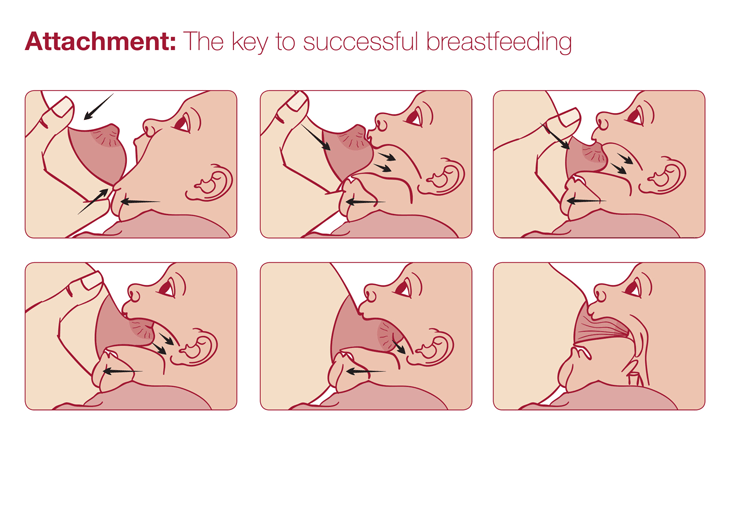In an ideal world, we want everyone to breastfeed. It is the most natural food that you can give to your baby. Your body makes it and it has the ideal nutrition for his growth, it is free and ready to provide every time. Of course, it is not easy for everyone, and the mother sometimes has trouble achieving breastfeeding. A lot of people think that because it is so natural it might be also easy, and you should just put the baby on your breast, and they’re going to latch on, and they are going to feed and everything is going to be beautiful, but things are not working like this sometimes. Breastfeeding is a great procedure not only by feeding your baby, but also to get a bond with him and connect mentally with your tiny human, but it is difficult especially the first 40 to 50 days after birth.
Many mothers used to convince themselves or allow others to influence them with the most well- known myths, making it so difficult to breastfeed.
Myth 1: Do not breastfeed during the first 2-3 days after the birth of the child, because you do not have milk yet.
First of all, directly after birth, your breast is ready to feed your baby so do not waste time. It is very important for breastfeeding to begin immediately after delivery while the umbilical cord continues to function, maintaining the mother-infant bond. In order for breastfeeding to go well, it is important to apply the golden hour after the birth where the baby after the first 30 to 45 minutes is ready to feed. So you will realize that your baby this first hour after birth, we used to call it the golden hour is ready to start learning how to feed for now on.
You can place your baby on your chest with skin to skin contact. Your baby feeling your body can also feel the security and support that he used to felt in her womb and oxytocin releases. So the myth here is that this kind of milk that came out of our breast after birth is not good or is not enough for your baby. No that’s not true.
Colostrum this is how we call this milk is a thick, sticky concentrated milk that usually has yellow clear or white appears. That produced in the early stage of pregnancy until 5 days after delivery. It is rich in antibodies, living cells, and enzymes that can help and protect your baby. It is not the classic type of milk that we used to know as “milk” but the nutrition ingredients that have in is much reacher than the transitional or the mature milk that came out after the fifth day.
Myth 2: Pain during breastfeeding is normal – and you need to accept it
Who wants to feel pain and especially in this beautiful moment. Pain always has a cause. We used to think that nipple pain or soreness is part of breastfeeding but this is not true. So if breastfeeding hurts, seek for the problem. According to Dr. Jack Newman “Although some sensitivity is common in the first few days, it should only last for a few days and should never be so severe that the mother is afraid to breastfeed. Any pain that is more than moderate is unnatural and is almost always due to poor breast intake by the baby. ”
Usually, the biggest issue is the wrong breastfeeding position, catch, and the wrong latch-on adjustment of the baby on the breast. Many new mothers believe that the pain during the first days of breastfeeding is normal. The most common cause of pain during breastfeeding is the incorrect placement- attach of the baby on the breast, resulting in baby breastfeeding from the nipple. Normally you need to put on your baby’s entire mouth around your entire areola.

What can I do to minimize the pain?
When the baby is placed correctly, the entire nipple and areola are in his mouth, which makes the suction movement very effective, but also gentle for your nipples without causing pain or damage to the nipple skin. In case you just try your baby eat only for your nipple except that is not eating enough or at all, he can also destroy your nipple. Another important reason why you feel pain during breastfeeding is the tongue tie. If your baby has a tongue-tie, it can be very difficult for him to breastfeed properly. In case you already have sore nipples you can use a nipple cream lanolin can work to heal your nipples but do not solve the problem. The best and most natural medicine for your nipple after you correct the position and the attachment of the baby is your milk. Just eject a few drops on your nipple and let it dry for a few minutes. The film or shield if you want to call it like this, it will be created can help your nipple heal faster.
Other causes of pain and discomfort are engorged breast, fungal infections, bites, nipple blebs (milk-filled cyst, a milk blister), mastitis, post-surgery breastfeeding, a new pregnancy, ovulation, intense milk flow reflex.
Myth 3: I do not produce enough milk
Less than 5% of women are unable to produce enough milk and especially women with anatomy problems on their breast. During the first six weeks of breastfeeding, the baby usually eats 14-16 times a day, and the duration of meals changes depending on his hunger, his mood. The more the baby irritates the breast, the more and faster breast milk will be produced (rule of supply and demand). Breastfeeding mothers with a schedule of three hours each and not on-demand usually report that their baby looks anxious during the day and hungry. Throw away the watches. The baby should be feed every time he is hungry and for as long as he wants. So if only you feed on demand or pumped regularly, your milk production will be better regulated. Don’t boycott yourself.
Obviously, the reasons that make you believe that you don’t have a sufficient amount of milk are two. So either your baby cries after each breastfeeding while you are using a timer (20 min for each breast), or your baby is observed not to gain weight at a satisfactory rate, or he loses weight. Regarding the reduced weight loss, although the baby is breastfeeding often, not because the mother does not have enough milk but because the baby does not get correctly the milk that the mother has. Usually, the problem is caused when the baby is no latched on the areola on the mother’s breast.
Who wants to feel pain and especially in this beautiful moment. Pain always has a cause. We used to think that nipple pain or soreness is part of breastfeeding but this is not true. So if breastfeeding hurts, seek for the problem.
What can I do to minimize problems while breastfeeding?
Usually, the biggest issue is the wrong breastfeeding position, catch, and the wrong latch-on adjustment of the baby on the breast. Many new mothers believe that the pain during the first days of breastfeeding is normal. The most common cause of pain during breastfeeding is the incorrect placement- attach of the baby on the breast, resulting in baby breastfeeding from the nipple. Normally you need to put on your baby’s entire mouth around your entire areola. When the baby is placed correctly, the entire nipple and areola are in his mouth, which makes the suction movement very effective, but also gentle for your nipples without causing pain or damage to the nipple skin.
In case you just try your baby eat only for your nipple except that is not eating enough or at all, he can also destroy your nipple. In case you already have sore nipples you can use a nipple cream lanoline can work to heal your nipples but do not solve the problem. The best and most natural medicine for your nipple after you correct the position and the attachment of the baby is your milk. Just eject a few drops on your nipple and, let it dry for a few minutes. The film or shield if you want to call it like this, it will be created can help your nipple heal faster.
Myth 4: I am sick or need to take medication
If the mother is ill and has a fever, she doesn’t need to stop breastfeeding. On the contrary, it is important, to continue to breastfeed as with this way she transmits the necessary antibodies to her baby, so the baby itself can develop immunity, in case he becomes infected. Also, in case the mother needs to take medications, this is not an issue. Most medicines are, now compatible with breastfeeding, but in case you have doubts about your medication, you can check their compatibility at http://www.e-lactancia.org/ It is a valid website that worldwide care providers take into consideration.
Myth 5: They use you as a pacifier.
Breastfeeding on demand is normal and healthy. Many moms feel their baby after the first few minutes of breastfeeding just licking the nipple without breastfeeding. Indeed your baby may indeed be sucking but not drinking. This is a tactic for infants to increase milk production until the next breastfeeding. Normally is a fast-growing baby’s way of boosting milk production when needed. Through breastfeeding, we do not only give nutrition to our babies but also give security, confidence, love, and calm, important elements for his emotional development.



